The Representation of Dataveillance in Visual Media
Subjectification and Spatialization of Digital Surveillance Practices
1_Introduction: The Non-Aesthetic of Dataveillance?
The current ubiquity of surveillance in the sense of a social-ordering process is mainly based on the architecture of technologies designed to allow for surveillance as a form of data collection known as dataveillance. [1] In order to investigate cultural meanings of technology, it is worth looking at its media representations and negotiations. It is important to note, though, that the relationship between digital technologies and visual media is quite peculiar. Digitality is difficult to visualize. Of course, visual media have tried to depict digital processes, but they have to make use of recurring visual metaphors. [2] In this context, for example, references to biological contexts are applied. Thus, data space in The Matrix (USA, 1999, Lana and Lilly Wachowski) is a mixture of organic and technical semantics: visually, data structures are displayed as text on a computer screen, whereas the screen’s greenish glow already connotes a form of life of its own. This level of meaning is further reinforced in the context of the code’s inherent dynamics in the form of physical patterns of movement when the code elements waft through the image space like a rain shower from top to bottom.
Such metaphors need not only refer to visual representations, they can also become thematic. In the film Minority Report (USA, 2002, Steven Spielberg), for example, a technical prediction of the future is consistently linked with semantics directed toward the past. A predictive policing technology — i.e., the analysis of large amounts of data to calculate the probability of future crimes to control the deployment of police forces — is personified in the form of the Pre-Cogs, who have visions of future crime and are integrated into an ambitious technical system but are themselves regarded as oracles and their environment considered a temple. At the same time, the older medium of the film or the linked practice of film editing becomes the central reference point for the presented PreCrime technology. The user information-search interface within the Pre-Cog visions resembles film-editing software, employing a timeline for orientation, (frame-accurate) forward and rewind, zoom, etc. New data (for example, the biography of the suspect in the opening scene) are manually transferred from an external terminal to a storage medium and then inserted into the main file like a new film image. Overall, it becomes clear that the technology that is already used in our reality in the form of digital predictive policing practices is linked with semantics that refer to mythology and technical precursors. In the context of Minority Report, this serves (above all) to make the ethical problems of data technology visible and discussable (oracles can be wrong/film can be manipulated).
For dataveillance as a digital practice, it can be assumed that recurring metaphorical strategies are applied since “everything we do on the Internet can become the subject of data collection and evaluation.” [3] As the example of Minority Report shows, a deeper analysis of this rhetoric is highly relevant in order to work out cultural models that are linked to a specific technology. [4] Accordingly, it is our main focus here to explore the representation of dataveillance in visual media despite the actual “de-visualization” of digital surveillance practices. We will begin by discussing what dataveillance changes compared to a “more traditional” type of visual surveillance in the surveillance film. Using the example of Enemy of the State (USA, 1998, Tony Scott), we carve out an analytical framework that locates some rhetoric of dataveillance in the visual media by determining dominant cultural interpretations at four levels. Afterward, the framework is tested against two further examples.
2_Representation of Dataveillance
Historical Development in Cinema
Several publications have already dealt with the aesthetics and history of surveillance cinema. [5] Normally, however, the technologies used are only discussed in a peripheral way, or, as in the films themselves, visuality still forms the central paradigm of negotiation. But there has been a clear development in media terms: “the power of looking is trumped by the power of knowing.” [6]
As a visual medium, films that deal with surveillance make implicit or explicit statements about the quality of images obtained through surveillance and thereby influence the perception of the film itself. In the history of the surveillance film, the position of images as representatives of “reality” has repeatedly been questioned in a self-reflective way. A significant example of this is Blow-Up by Michelangelo Antonioni (GB, USA, IT, 1966), in which a photographer identifies in one of his pictures what he believes to be evidence of a murder. In the enlargement of this photograph (a “blow-up”), however, the proof is lost in the grain of the image, which makes the photograph only self-referentially readable, such that it now refers exclusively to its own mediality and the technical conditions of its production. The actual epistemic quality of the image lies in its visual surface, whereas references to the deep technical structure negate the information value of the picture.
There is a remarkable difference, compared with American surveillance thrillers produced after 9/11, in the context of the “war on terror,” in which digital monitoring practices are rarely negotiated in their application but even less in their effectiveness. [7] Even leaving aside the ideological political dimension, the characteristics of the negotiated media constellation change significantly in the context of digital surveillance. Here, the deep structure in the form of data and algorithms contains the actual potential for gaining knowledge, for which the visual surface merely provides a tool for interpretation and “translates” it visually. The function of the surface, therefore, is merely to illustrate the underlying algorithmic processes. So, in contrast to visual monitoring, references to the technical process of dataveillance do not question the generated knowledge but rather refer exactly to the point where the “objectivity” and “truth” of the process is addressed. [8] We develop an analytical framework below to investigate the changing representations of dataveillance in more detail.
Four Levels of Representation
We would like to propose four levels — syntactic, pragmatic, semantic, and contextual — on which data surveillance can be represented across visual media. We develop these levels using the film Enemy of the State, because it is one of the first films in which surveillance technology takes a central narrative role over large parts of the film, allowing the aesthetic paradigms of intradiegetic surveillance images to also shape the aesthetics of the narrative itself. In this film, a video recording of a politician committing a murder falls into the hands of the protagonist Robert Dean, who then comes under the focus of the US National Security Agency (NSA), a corrupt investigative authority controlled by that same politician.
Syntactic level: The presentation of the dataveillance apparatus is conceptualized as a construct that connects and integrates different sources, digital as well as analog, to visually simulate a digital process (in the sense of real-time global connectivity). This is particularly evident in the cinematic simulation of monitoring during the NSA investigations. The film contains several long escape sequences of Dean in which conventional means of cinematic staging are supplemented by images from various surveillance sources. The speed of action sequences requires the possibility of switching instantly between these surveillance apparatuses at different topographic levels (traffic monitoring, satellites, etc.) without any loss of time, which requires that cameras already be aligned to the protagonist. The title, Enemy of the State, already refers to the central cinematic fiction by which an unrestricted surveillance system concentrates (in principle on a global level) on a central subject; it thus approaches, in its function, the cinematic dispositive whose visual apparatus aligns with the actions of its protagonists (whereby in both cases the subject is constructed in the context of its visualization). Using cinematic conventions to depict an unrestricted digital surveillance dispositive, the film asserts its power of visual interpretation; it stages and aestheticizes a global visibility, whereby the cinematic representation and depicted surveillance each ideologically reinforce the other (see below).
Pragmatic level: The pragmatic level is centered on the depiction of specific functions of technological interfaces and the characteristics of the human-machine interaction in the context of digital surveillance practices. Symptomatic of this level is an early scene (beginning at 00:31:30) during which NSA specialists gather information on the protagonist’s biographical, social, and economic background, and discover connections to his former lover Rachel. This scene introduces a complementary relationship between data and film reality: each data request takes place in seconds, and the interaction with the computer resembles a real-time dialogue, in which the appropriate answer to each question is immediately available and provides deep insights into the represented reality. In addition, the visualization of the data query interface emphasizes the order-generating structure of the evaluation behind it.
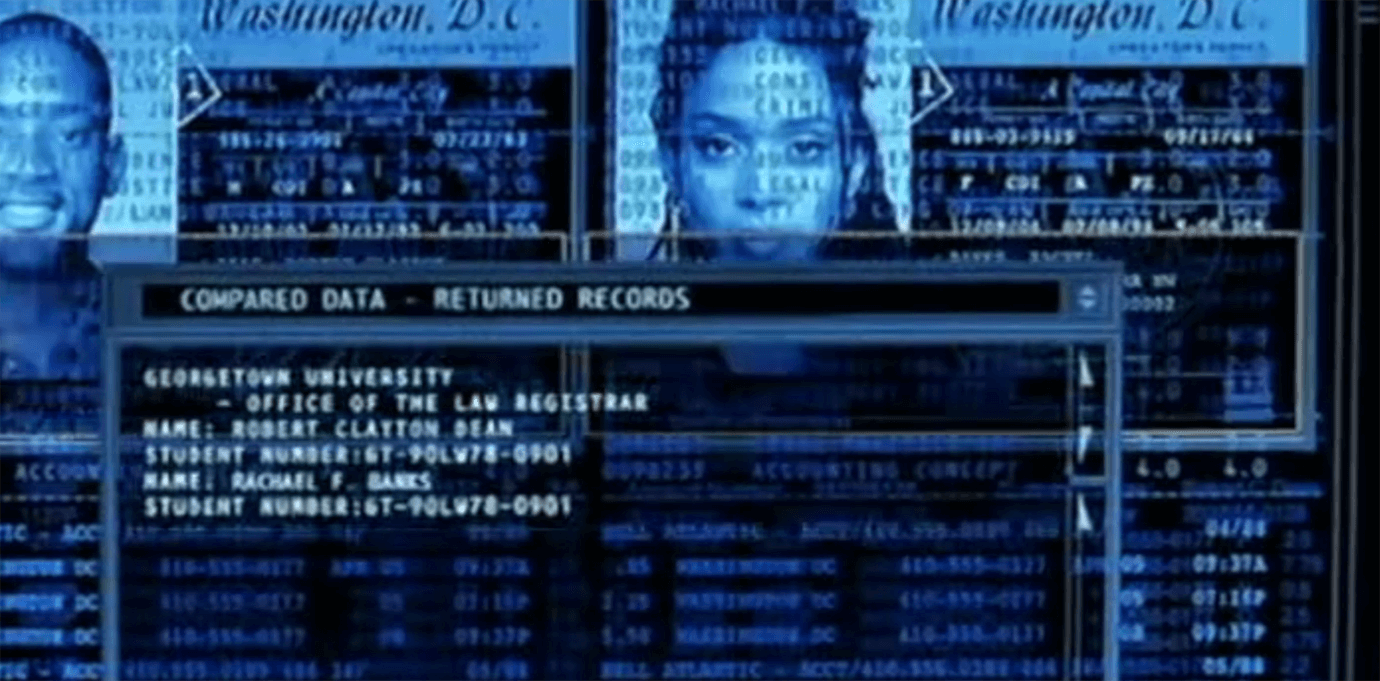
Semantic level: This dimension focuses on the representation of data structures, algorithms, and their corresponding meanings and connotations. In Enemy of the State, a USB stick with a video recording of the political murder is slipped into Dean’s bag without his knowledge while he is shopping in an underwear store; shortly after this, the man who planted the recording on Dean is hit by a car as he attempts to escape from men who are attempting to retrieve the tape from him. Trying to reconstruct what happened shortly before the fugitive’s death (during a scene beginning at 00:32:42), NSA data specialists analyze the underwear store’s surveillance recordings, zooming out and rotating the image around Dean’s shopping bag to determine whether the USB stick has been placed within. In the accompanying dialogue, the analysts speak only of one camera in the shop. This indicates that the shot staged as a camera movement rotating around the bag by more than 180 degrees is not a jump from one perspective to another using a camera change, but a computer simulation, which — crucially — is not discussed at any point in the dialog. Because the central image parameters — such as the “granularity” of the image, which results from the lower resolution of the shop camera and provides the “surveillance aesthetics” of the scene (which would not be necessary in the context of a simulation) — remain constant, the simulation is spatialized and broken down into examining a photograph in real time. [10] In accentuating the image character of the depicted, possible miscalculations in the computer model are never discussed.
The visualization of digital processes and technologies thus opposes self-reflection: the scene shows how depicted and depiction identify each other as evident, especially when elements of cinematic staging (pans, zooms, etc.) are used to visualize the computer simulation. What is depicted in the simulation, therefore, seems to have the same quality of knowledge and perception as what is depicted in the film. Central to this scene is the fact that, like the NSA investigators, not even Dean himself knows yet that the stick was slipped into his bag: here, the simulation of the bag’s content proves to be the central interpreter of the scene; the simulation ‘knows’ more than all of the diegetic figures. This is quite typical of the cinematic representation of digital data practices. As soon as the dominant paradigm of surveillance film is no longer visuality but knowledge based on digital data, reflective tendencies fade into the background; the constructed character of digital data models is no longer discussed. [11]
Contextual level: This dimension concerns the ideological framing of the negotiation of dataveillance, in particular, the represented political system, social actors, discourses, etc. By establishing a global visual aesthetic of surveillance and by integrating social and economic data systems (see above) into the surveillance structure depicted, Enemy of the State proclaims the inescapability of the system, which, according to Catherine Zimmer, is the very link between the world and the subject, which has only to adapt to the higher-level structure:
By establishing both a visual and narrative continuity between the personal and the political, the singular and the total, the house and the globe, all through devices of surveillance and mediation, the film indicates that it is in some ways proper domestic work — and the task of the media consumer — to establish one’s place in the global system. [12]
On the basis of this framework a digital image of reality is staged within the discourse of the film, which can take over compensatory epistemological functions. In the course of this epistemic model and the purported indispensability of digital practices, the discussion of digital surveillance shifts away from the legitimacy of state practices [13] towards their effective control: if digital investigation technologies are subject to democratic control mechanisms, then they can also serve positive purposes. Accordingly, the antagonists in the film are also sanctioned with the help of surveillance techniques in the end.
Overall, it becomes apparent that only a combined view of all four dimensions reveals the ideological framework of the film taken as an example. In the context of Enemy of the State, the political discourse (contextual level) of the film follows directly from the semantic and pragmatic representation of dataveillance (which together form an epistemic model). The level of syntax provides the basis for this because it underlines the function of the other dimensions for the cinematic discourse. To deepen the analytic capacity of the model, we will apply it to other types of cinematic text (example 1) and other media (example 2) in the following sections.
3_Dataveillance in Documentary Formats
Visualizations of digital surveillance practices go hand in hand with the problem of visualizing data and algorithms: what is there to see in a server room except for the server room itself? Therefore, the technology in documentaries about dataveillance is represented via computer animations. On this basis, we have chosen three documentaries that are all critical of digital surveillance practices on the content level, but visually support the effectiveness of technology and, especially through spatialization strategies, claim the autonomy of the monitoring Internet and data structures as the basic code upon which reality is built.
Syntactic level: The German documentary Pre-Crime (D, 2017, Matthias Heeder and Monika Hielscher), which deals with predictive policing techniques, follows, among others, Robert, who is on the so-called Strategic Subject List (SSL) of the Chicago Police Department. His SSL score, which, according to the closing commentary, remains unchanged at 215 points throughout the filming of the documentary, is visually attached to his physical body with a hashtag and the number 215 (see figure 2).
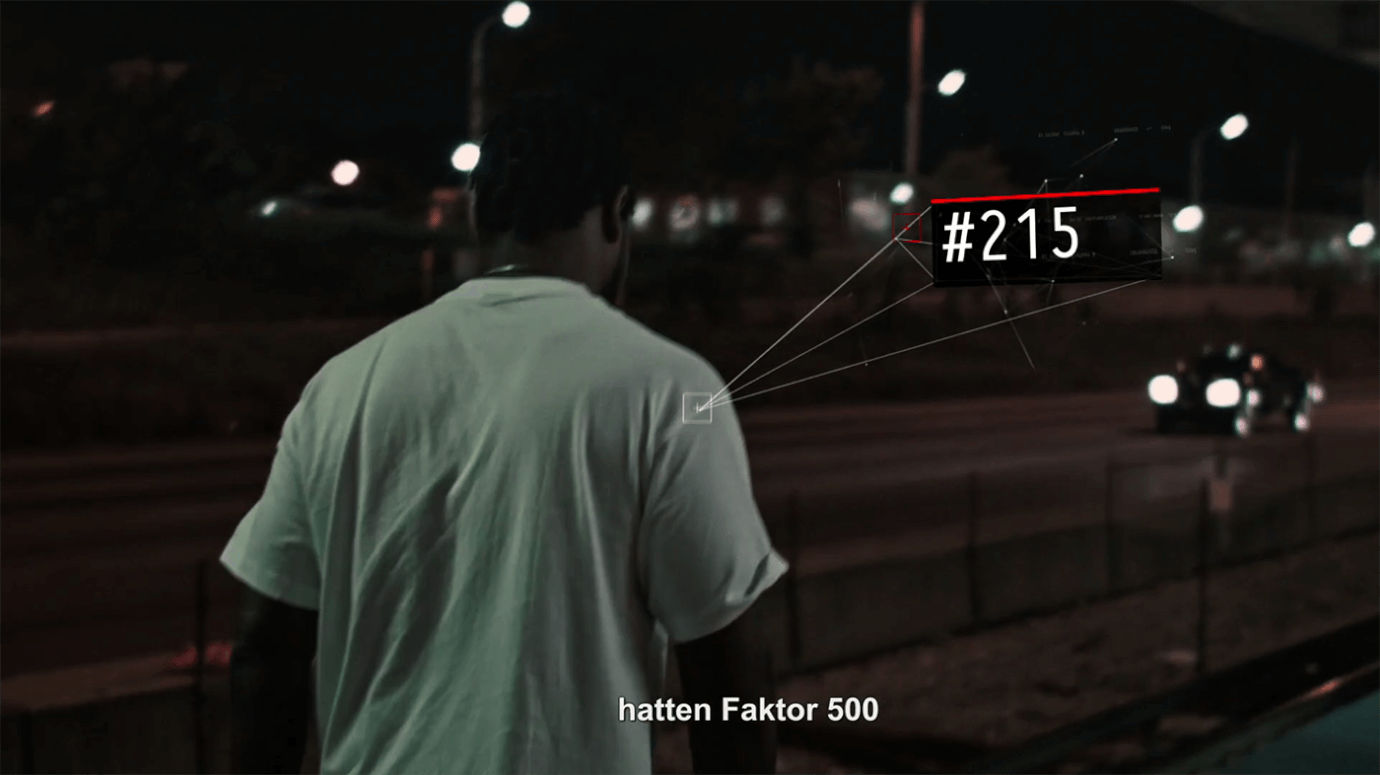
Furthermore, the polygonal visualization of the profiling process in Pre-Crime (see figure 3) presents itself as a projection of a person, which is built up from fragmented data like social security number, personal email, address, marital status, annual income, employer, date of birth, place of birth, bank account, credit score, religion, nationality, hair color, phone number, city of residence, or home or health insurance. The persons as data subjects are categorized into statistical identity units and with every new talking-head interview shot are assigned to different parameters. The most common and most highlighted category is that of the occupation or current job due to the role of the interviewed experts. This social classification does not apply to Robert though. He is surrounded by the categories of gender, social contacts, race, education, and the emphasized category “Detected In.” The documentary, therefore, differentiates just like the criticized algorithm. The visualization represents data as something given and present in the data room, “floating in the air” — as something that can be individually extracted and linked, but the production remains invisible. The polygon acts as a symbol for this process, in which the categories successively attach themselves as dots of the net in the form of infoboxes. This “personal” data polygon remains detached from the human body that is seen on the screen and splits the screen mirror-like in half: the first half contains the machine-generated data subject in the form of a three-dimensional object created from a combination of different categories, the second half has the classic documentary interlocutor.

The (numerical) annotation can refer not only to a person but also to space and can be used for visualizing automated decision-making processes. In the following example, the category of the “estimated crime probability” of a traffic crossing changes from green to red and ends with a percentage number of 59.00 % (see figure 4). This familiar color scheme is shown a second time in the space via the traffic lights. While the red in the annotation only indicates a probability, by defining the category as “crime probability,” the annotation constructs a space for which the given probability of crime implies the necessity of monitoring. Surveillance focuses on space and is category-centered (not person-centered), as if the space itself might trigger crime, thus supporting the targeted social sorting of people and groups on the basis of the places and spaces they occupy. It seems that the space itself is influencing people’s behavior: in this place, you become a criminal. [16]

Syntactic level 2: In the Austrian documentary Alles unter Kontrolle (Everything Under Control; AUT, 2015) the journalist Werner Boote travels all around the world questioning people about our self-monitoring culture, the surveillance industry, the digital economy, the business of “data-mining,” or topics related to social-media surveillance and other things. The personalization based on the travelogue-like story is continued on the visual level as Boote is represented as a geodata subject — not via GPS data, however, but via a blue cube that implicates that everyone worldwide can be localized by global geocoordinates (see figure 5). Moreover, as we can read at one point in the documentary, this square-shaped package tracks much more than Boote’s coordinates: it contains information from his blood group to the place and date of his birth and the name of his father.

Indeed, through paratexts, we learn that the Austrian Federal Ministry of the Interior categorizes Boote as an activist. [20] In the film, however, it appears that the rating action is carried out by a global monitoring system, since the spatially visualized worldwide tracking that is a connecting structural element of different episodes gives the impression that a global system is “behind it,” and the whole “data world” thus creates global dataveillance. Spatialization, therefore, focuses on digital surveillance as a tracking-machine. In another storyline, Boote is driving through Nevada. The montage connects the images of him driving a car with the animation of his geodata cube and the tracking process on the dataveillance map visualizing the possibility to geolocate data streams in real time (see figure 6).

Pragmatic level: Maps for visualizing crime increasingly augment real-life police work. [22] Pre-Crime deals with the issue of crime mapping as a tool of proactive simulation to identify the risk of a potential future criminal offense. Both interfaces of two different systems discussed in Pre-Crime square the crime probability in their cartographic representation of data (see figure 7). The viewer only gets to see the interfaces of the systems; there are no visuals to explain the operating technology that designs this space of probabilities. The interfaces not only classify space as “criminal” (an attribute based on actions) but visualize the assumed probability of crime using a square shape which already reduces complexity itself. This crime-mapping technique pretends as if one could draw clear, straight lines between dangerous places and harmless places, and therefore stigmatizes via demarcation.

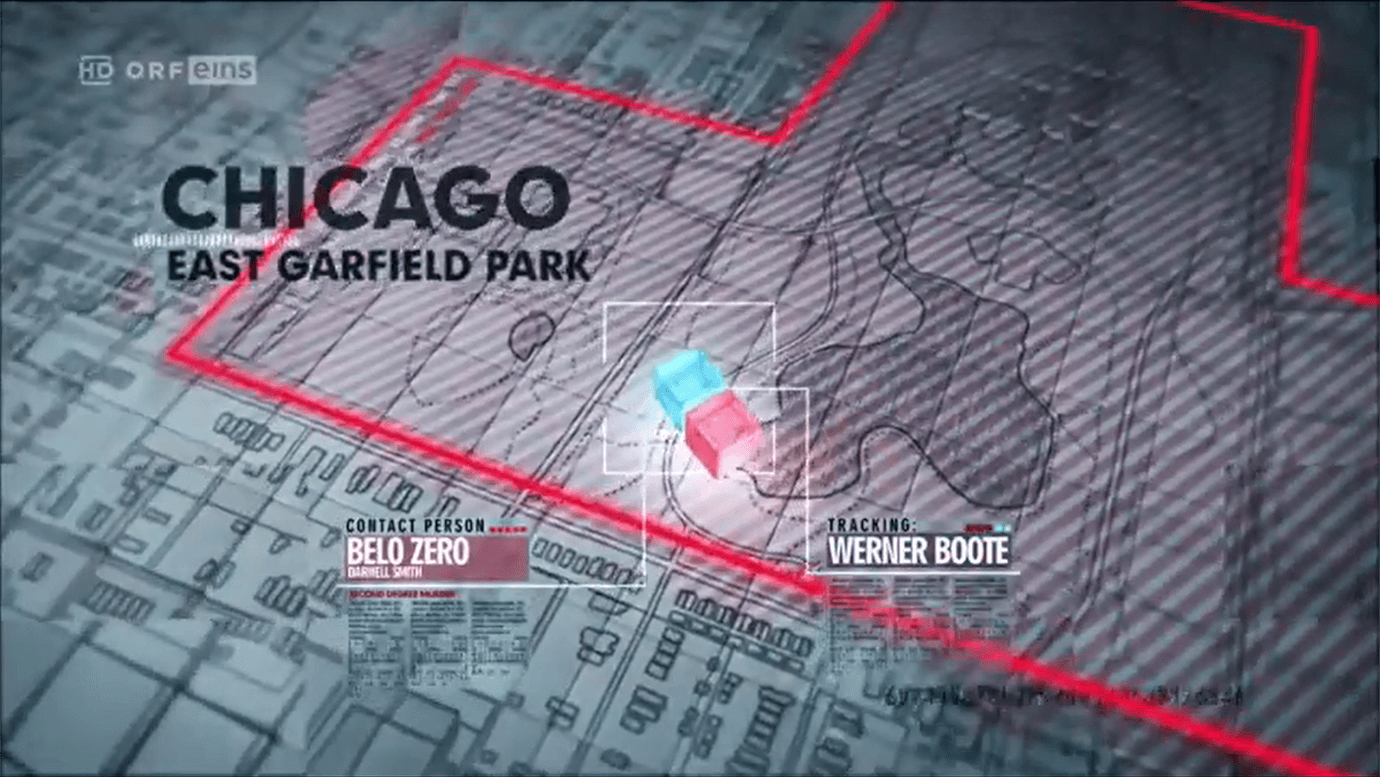

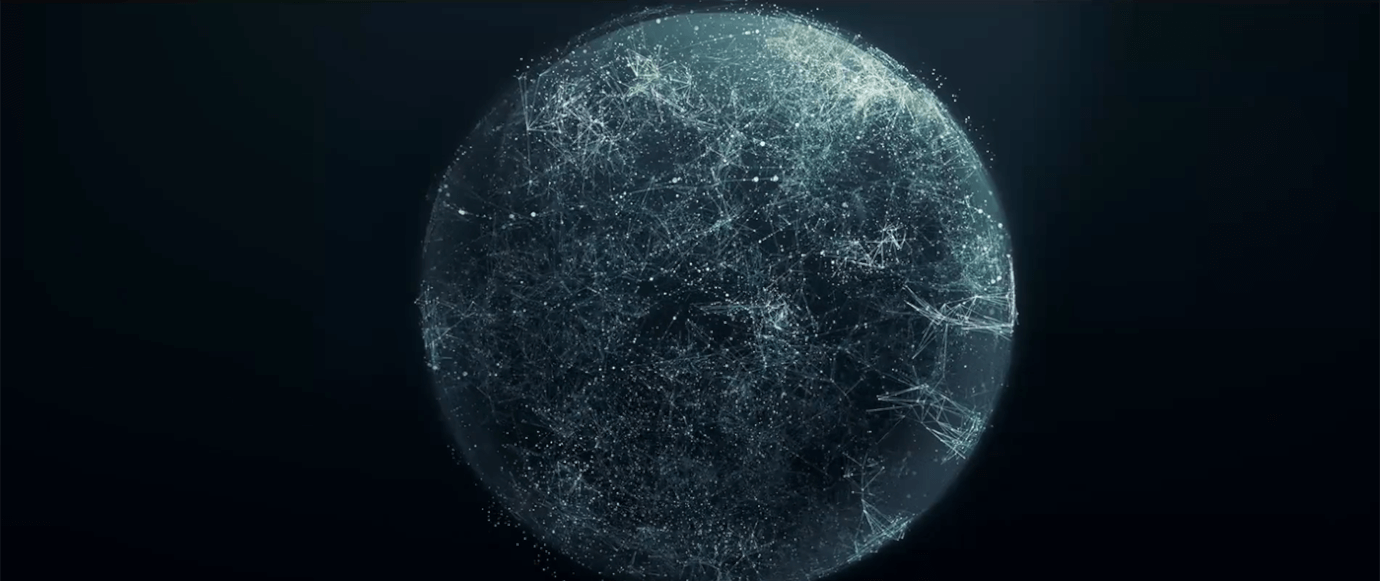
Think of yourselves as drifting into the globe so you’re going inside the globe and you can go to any point in the globe and look at any given point to see the relationship they have with all the other dots in the globe. When you go into the globe you pick out a dot you can pull it out of that relationship graph and with it will come all of those that it has a relationship with. (00:41:08–00:41:42)
The visualization (see below) suggests the possibility of independently navigating this metadata space, and establishes an instrumental global simulation in which the world is controllable as a polygon mesh. The mission of intelligence services then is “just a matter of finding that structure” (00:40:01–00:40:03).

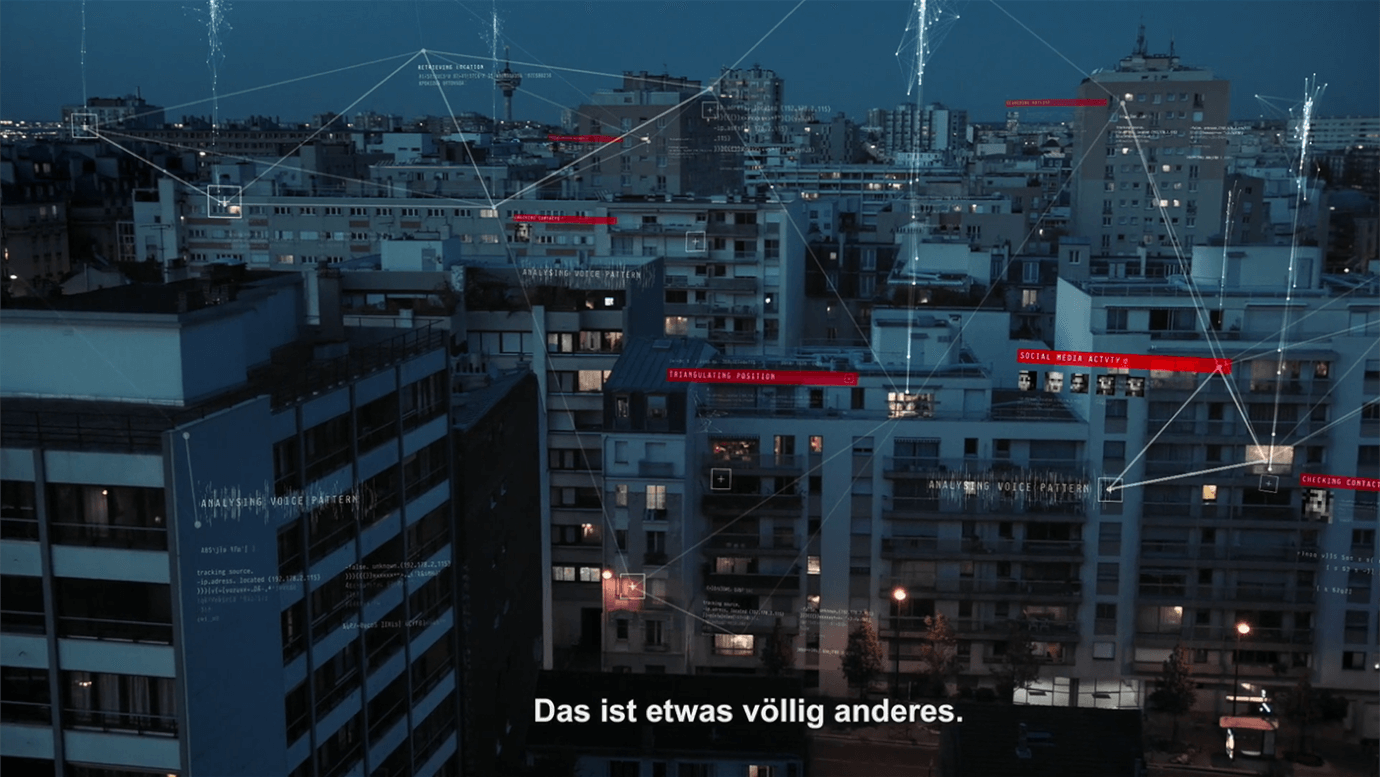
4_Dataveillance in the Computer Game
The second context to be considered here is the representation of dataveillance in computer games, an example which will make clear that representations are also affected by media characteristics. In the computer game, surveillance scenarios seem almost predestined to function as a narrative framework for self-empowerment on the pragmatic level. Computer games often use narratives of total state control to derive a recurring game objective from the manipulation and destruction of surveillance cameras. [31] Extensively monitored environments are understood not only as restrictions here, but also as prerequisites for the development of a character: without monitoring, there are no experience points for the avoidance or destruction of the visual surveillance apparatus. Popular computer games also contain the player-driven tracking and tracing of objects and people as elements of their game mechanism. [32] In this context, traditional surveillance narratives contextualize game scenarios, within which it is necessary to transform external control into self-control by fighting surveillance or establishing practices of counter-surveillance. These tendencies are reinforced within the framework of the representation of digital dataveillance. In Watch Dogs (Ubisoft, 2014), digital monitoring embeds itself in the general dispositif of computer games.
Syntactic level: Watch Dogs does not differentiate on its syntactic level between the functional allocation of information in the interface (mini-map, mission display, an indication of interaction points in the diegesis) and the representation of supplementary intradiegetic data practices. Therefore, it is hardly conceivable that a critical reflection on the latter takes place here; at least this would also have consequences for the flow of information between the program and the users and would be equivalent to a disturbance of the game process.
Pragmatic level: Traditional stealth mechanisms are supplemented by the disembodied occupation of entire areas of the world via computer access to surveillance cameras. While the aesthetics of video surveillance are maintained, digital surveillance is directly linked to an increase of player agency, which is no longer tied to the physical presence. Doors are opened, detonation traps are activated, and other computers can be hacked from a surveillance camera perspective (see figure 13). The mission area often does not even need to be physically entered. Instead, the player has to “jump” from camera to camera in order to complete the mission successfully. The simulation of total monitoring of the entire game world is to be understood as a consistent dispositif development of the computer game: via the networked surveillance cameras, a kind of “God’s perspective” is implemented in the open world setting, which acts as a prosthesis of the players’ self-empowerment. It enables disembodied users to completely manipulate the environment, liquidate opponents, and symbolically take possession of parts of the world. Digital surveillance is synonymous here with the total spatial accessibility of the diegesis for the player.
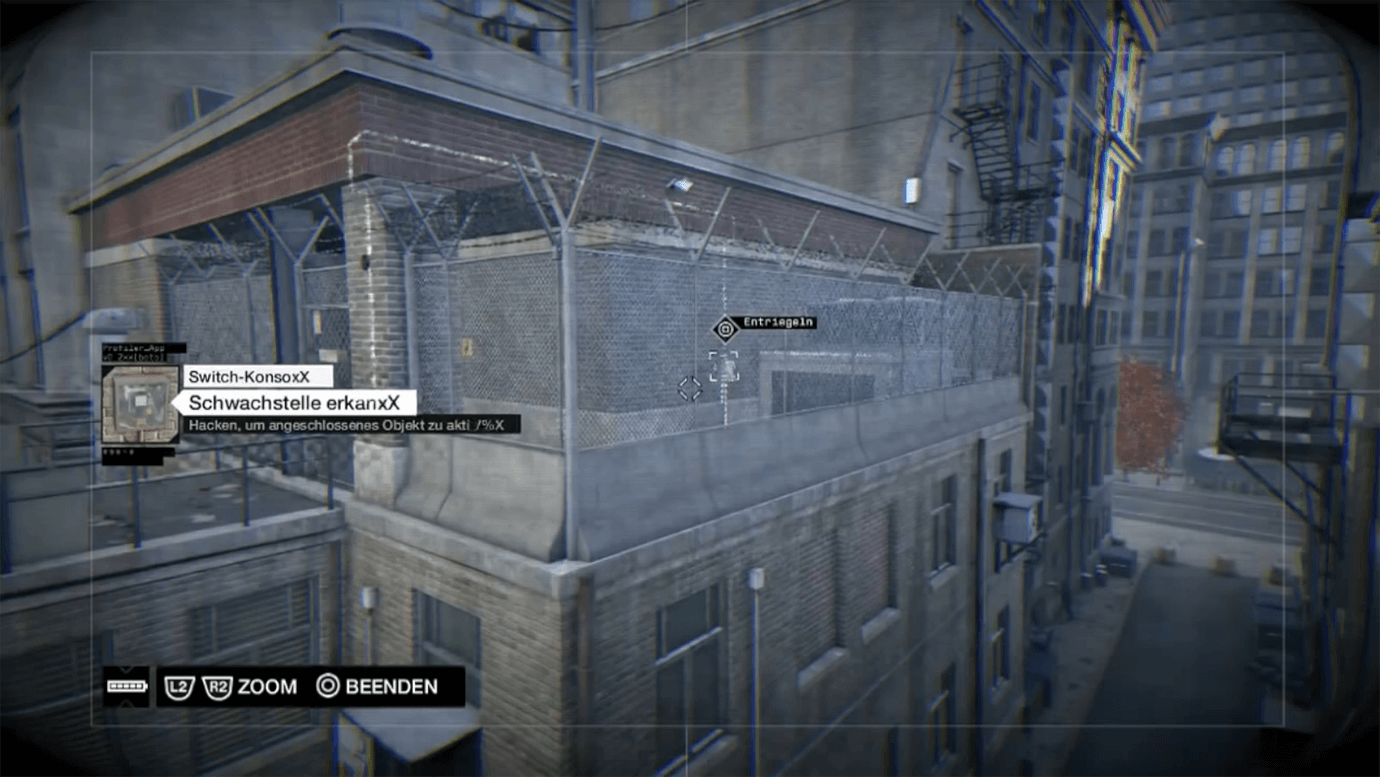
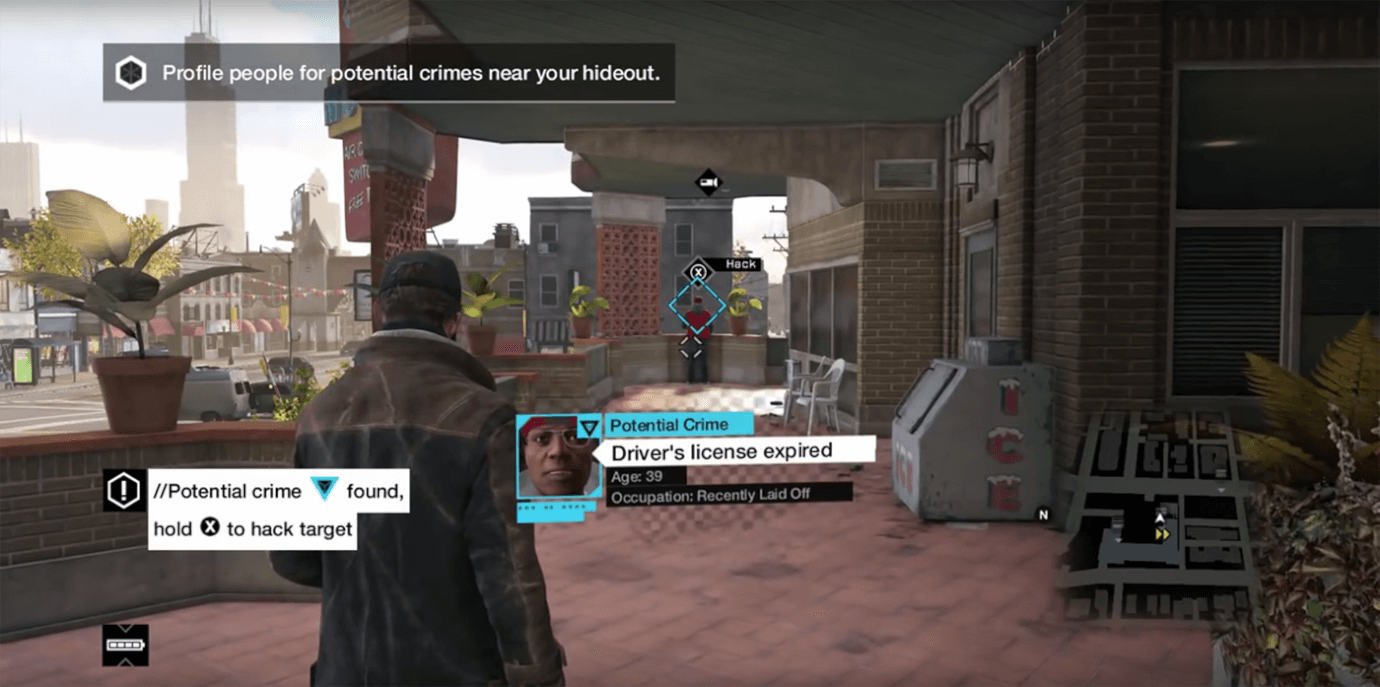
Contextual level: Insofar as surveillance is normally embedded functionally and thus more or less invisibly in the computer game’s mechanics and distribution of information, computer games offer a mostly uncritical vision of dataveillance as a subject. The topic may be treated within a dystopia, but on the level of game mechanics, dataveillance always remains functional for the game process.
Accordingly, the narration in Watch Dogs distinguishes between surveillance by the player and external surveillance. Techniques of monitoring by the protagonist function in the fight against a corrupt political system, and are thus temporarily and positively connoted. On the other hand, a negative extreme is the comprehensive manipulation of the population’s behavior by means of monitoring data to increase the power of political antagonists who administer electoral manipulation (which ultimately only reflects the motivation of the player, who also aims to bring the depicted world under his complete control). In contrast, games that address surveillance as a control mechanism behave in a self-reflexive manner in relation to their own media characteristics (in terms of the necessity for controlling the player). As this tends to inhibit the game process, such attitude is very rare to observe on the game market; the best-known exception is The Stanley Parable (Galactic Cafe, 2013). [35]
5_Conclusion: Applications of the Model
Personalization and spatialization are common staging strategies for presenting technology. Illustrative, for example, is the presentation of the Internet of the year 2021 in Johnny Mnemonic (USA, 1997, Robert Longo), where the protagonist acquires a kind of computer-game ego perspective on the topography of cyberspace. However, the framework presented here makes it possible to further analyze the production of meaning and to uncover individual layers of significance. Thus, clear parallels can be seen on the syntactic level across all the examples discussed. Visual connotations (“we are watched”) also remain in the discussion of dataveillance. With unlimited and globalized dataveillance, a mirroring data space is created, which can provide in-depth insights into reality and usually integrates itself into the presentation beyond individual scenes. This often leads to the monitoring instance being transformed into a narrative instance. However, examples differ considerably in the types of semantics that are attached to this model. While Enemy of the State continues to focus on the protagonist as the central subject, the documentaries examined here tend to attribute sovereignty and subjectivity to the data space itself, [36] where the real world is object to the sovereignty of interpretation of the data world (the real world becomes arbitrarily “formable” and accessible depending on the chosen categorization). The computer game, in turn, uses this model on the pragmatic level because the player-observer uses the data space as a means to completely self-own/subjectify the game world.
A note on the limits of applicability of the framework that we developed in this article is perhaps necessary: we chose the examples that we did for their illustrative nature; we do not claim them to be representative. A sensible question for future research would be to differentiate the negotiations with regard to different technologies and practices of dataveillance, film or game genres, and so forth. However, there is a strong tendency across all examples that an apparent placelessness of the digital stimulates a rhetorical shift of the invisible, immaterial, and unlimited to their exact opposites: visibility, materiality, limits. It is precisely through rhetorics of spatialization and subjectivization that digital surveillance dispositifs always connote the paradigm of replacement: they apparently replace cinematic staging instances and game mechanics in computer games, and thus they replace, in a broader sense, types of perception and action. Digital data space substitutes for “real” space, and thus, traditional knowledge models and world perceptions, by the framework of the characteristics attributed to it: omnipresence, objectivity, etc. Precisely because these visual staging strategies are quite similar across visual media or complement each other in their semantics, visual media have a strong influence on the narrative of a shift in cultural paradigm through dataveillance.
_How to Cite
Martin Hennig and Miriam Piegsa. “The Representation of Dataveillance in Visual Media: Subjectification and Spatialization of Digital Surveillance Practices.” On_Culture: The Open Journal for the Study of Culture 6 (2018). <http://geb.uni-giessen.de/geb/volltexte/2018/13895/>.
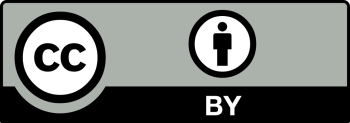
_Endnotes
- [1] As early as the mid-1980s Roger Clarke coined the term “dataveillance” (Roger Clarke, “Information Technology and Dataveillance,” in Communications of the ACM 31.5 [1988], 498–512).
- [2] The newest book from David Lyon also stresses the continuing relevance of metaphors in speaking about surveillance and even dataveillance, and is advertised by the publisher with the claim that “it is time to stop using Orwellian metaphors and find ones suited to twenty-first-century surveillance.” See Wiley, “The Culture of Surveillance: Watching as a Way of Life,” (2018), accessed November 07, 2018, <https://www.wiley.com/en-us/The+Culture+of+Surveillance%3A+Watching+as+a+Way+of+Life-p-9780745671734>.
- [3] Thorben Mämecke, Jan-Hendrik Passoth, and Josef Wehner, “Bedeutende Daten − Einführende Überlegungen,” in Bedeutende Daten: Modelle, Verfahren und Praxis der Vermessung und Verdatung im Netz, eds. Thorben Mämecke, Jan-Hendrik Passoth, and Josef Wehner (Wiesbaden: Springer VS, 2018), 1–16, here: 2.
- [4] On cultural semantics of surveillance in specific contexts see Lukas Edeler, Martin Hennig, and Miriam Piegsa, “Culture of Surveillance,” in The SAGE Encyclopedia of Surveillance, Security, and Privacy, ed. Bruce A. Arrigo (Thousand Oaks: SAGE, 2018), 980–983.
- [5] See exemplarily Sébastien Lefait, Surveillance on Screen: Monitoring Contemporary Films and Television Programs (Lanham, MD: Scarecrow Press, 2013); Peter Marks, Imagining Surveillance: Eutopian and Dystopian Literature and Film (Edinburgh: Edinburgh University Press, 2015); Catherine Zimmer, Surveillance Cinema (New York: New York University Press, 2015); John M. Wise, Surveillance and Film (New York: Bloomsbury Academic, 2016).
- [6] Steve Anderson, “Screening Surveillance,” (2015), accessed June 25, 2018, <http://www.criticalcommons.org/Members/ccManager/clips/screening-surveillance/view>.
- [7] See Martin Hennig, “Big Brother Is Watching You – hoffentlich: Diachrone Transformationen in der filmischen Verhandlung von Überwachung in amerikanischer Kultur,” in Räume und Kulturen des Privaten, eds. Eva Beyvers et al. (Wiesbaden: Springer VS, 2016), 213–246. Significant in this respect are series like 24 (Fox: 2001–2014), Homeland (Showtime: 2011– ), or films like The Dark Knight, dir. Christopher Nolan (Warner Bros.: 2008) and Zero Dark Thirty, dir. Kathryn Bigelow (Columbia Pictures: 2012).
- [8] Consider the well-known Big Data definition by Danah Boyd and Kate Crawford, in which epistemic assumptions play a central role in determining the cultural perception of data practices: “Mythology: the widespread belief that large data sets offer a higher form of intelligence and knowledge that can generate insights that were previously impossible, with the aura of truth, objectivity, and accuracy.” Danah Boyd and Kate Crawford, “Critical Questions for Big Data: Provocations for a Cultural, Technological, and Scholarly Phenomenon, Information,” in Communication & Society 15.5 (2012), 662–679, here: 663, emphasis in original.
- [9] Enemy of the State, dir. Tony Scott (Touchstone Pictures: 1998), 00:32:03.
- [10] This idea of spatial exploration using a photograph of course has precursors in the science-fiction film. Think, for example, of the detective work in Blade Runner, dir. Ridley Scott (The Ladd Company: 1982), where on the basis of a digital image, camera panning into the not pictorially represented becomes possible.
- [11] See, e.g., the Bourne-series, dir. Doug Liman, Paul Greengrass, and Tony Gilroy (Universal Pictures: 2004– ) or Snowden, dir. Oliver Stone (Endgame Entertainment: 2016).
- [12] Catherine Zimmer, Surveillance Cinema (New York: New York University Press, 2015), 130.
- [13] Like in earlier political thrillers such as Blue Thunder, dir. John Badham (Columbia Pictures: 1983).
- [14] Pre-Crime, dir. Matthias Heeder and Monika Hielscher (Kloos & Co. Medien GmbH: 2017), 00:23:48.
- [15] Pre-Crime, 00:07:42.
- [16] See Nils Zurawski, Raum – Weltbild – Kontrolle: Raumvorstellungen als Grundlage gesellschaftlicher Ordnung und ihrer Überwachung (Opladen/Berlin/Toronto: Budrich UniPress, 2014), 38.
- [17] Pre-Crime, 00:15:57–58.
- [18] Alles unter Kontrolle, dir. Werner Boote (Nikolaus Geyrhalter Filmproduktion: 2015), 00:59:24; 01:01:27; 01:01:31.
- [19] See Ramón Reichert, “Big Data als Boundary Objects: Zur medialen Epistemologie von Daten,” in Bedeutende Daten: Modelle, Verfahren und Praxis der Vermessung und Verdatung im Netz, eds. Thorben Mämecke, Jan-Hendrik Passoth, and Josef Wehner (Wiesbaden: Springer VS, 2018), 17–34, here: 21.
- [20] See Werner Boote, “Werner Boote ein Aktivist?,” accessed June 25, 2018, <http://www.wernerboote.com/cms/wernerboote/index.php?idcatside=48>.
- [21] Alles unter Kontrolle, 00:23:42; 00:24:07; 00:24:13.
- [22] See Zurawski, Raum – Weltbild – Kontrolle, 109.
- [23] Pre-Crime, 00:28:12, 00:50:57.
- [24] Alles unter Kontrolle, 00:31:05.
- [25] Alles unter Kontrolle, 01:07:41; 01:07:47; 01:07:50; 01:07:58; 01:08:06; 01:08:32.
- [26] A Good American, dir. Friedrich Moser (El Ride Productions: 2015), 00:52:47.
- [27] A Good American, 00:40:51; 00:41:02; 00:41:15; 00:41:22.
- [28] See Sharon Lin Tay, “Architectures of Control and Points of Resistance: Surveillance Culture and Digital Documentaries,” in A Companion to Contemporary Documentary, eds. Alexandra Juhasz and Alisa Lebow (Chichester: Wiley Blackwell, 2015), 566–579, here: 575.
- [29] Pre-Crime, 00:24:49.
- [30] The documentary films often try to convey political implications through their commentary. However, this can also be in contrast to the image of a data monitoring system characterized by arbitrariness and omnipotence.
- [31] See the successful game series Metal Gear Solid (Kojima Productions/Konami: 1998– ), Deus Ex (Ion Storm Austin/Eidos Interactive: 2000– ) or Bioshock (2K Games: 2007– ).
- [32] See the game series Thief (Locking Glass Studios, Ion Storm Austin, Eidos Montreal/Eidos Interactive, Square Enix: 1998– ), Assassin’s Creed (Ubisoft: 2007– ), Dishonored (Arkane Studios/Bethesda Softworks: 2012– ), or the independent game Papers, Please (Lucas Pope: 2013).
- [33] Screenshot from Watch Dogs (Ubisoft: 2014).
- [34] Screenshot from Watch Dogs (Ubisoft: 2014).
- [35] See Marcel Schellong, “Räume als Formationen des Wissens am Beispiel von The Stanley Parable,” in Spielzeichen II: Raumspiele – Spielräume, eds. Martin Hennig and Hans Krah (Glückstadt: Verlag Werner Hülsbusch, 2018), 228–245.
- [36] Of course, there are also examples of this in fiction. For example, the series Person of Interest (CBS: 2011–2016) is well-known, in which a subjectified monitoring system (“the machine”) functions as a positively connoted narrative instance. However, the machine is also humanized and remains in a serving position in relation to the protagonists. Starting in season four, a second monitoring system is introduced, in which the subjectivation, similarly to the discussed documentations, is negatively connoted, because here the system acts completely autonomously and merely instrumentalizes people.


